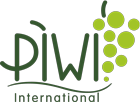Black rot and KEF? - Not a real challenge!
According to multiple applications in 2021, PIWIS will occupy an area of around 145 hectares in Styria. This corresponds to 2.9% of the entire Styrian vineyard area. By far the most common varieties are Muscaris and Souvignier gris. As in previous years, current experiences from experimental cultivation are presented here in a condensed form.
* KEF = cherry vinegar fly
Weather 2021
Last winter was characterized by a consistently good water supply. A very cold April was followed by a cool May. The latest shoot of the vines in the last 25 years was the result. Both months were also characterized by a high number of rainy days. The very warm and dry months of June and July were followed by a comparatively cool and humid August. September was again one of the warmer ones compared to previous years and turned out to be a special “ripening accelerator”.
Generally speaking, the conditions for fungal diseases in 2021 were not the best. Of course, that makes the winegrowers happy! In the crucial phase from May to July there were only 37 rainy days in the Leutschach branch (52 in 2020, 48 in 2019). Only 20% of the entire time there was leaf wetness *, which is significantly less than in the previous vegetation years 2020, 2019 and 2018 with approx. 25% each. All of this explains the relatively low black rot infection pressure in the past season.
Plant protection measures 2021
All PIWI varieties were treated against fungal diseases with the same frequency and intensity. Due to the successive increase in black rot (Guignardia bidwellii) in recent years, a stricter plant protection regime has been prescribed from the 5-leaf stage. From the 5-leaf stage to post-flowering, five treatments were carried out 7 to 12 days apart. Because of the increasing oidium pressure, a separate sulfur injection took place on August 10th.
Source: Haidegger Perspektiven, 4/2021

